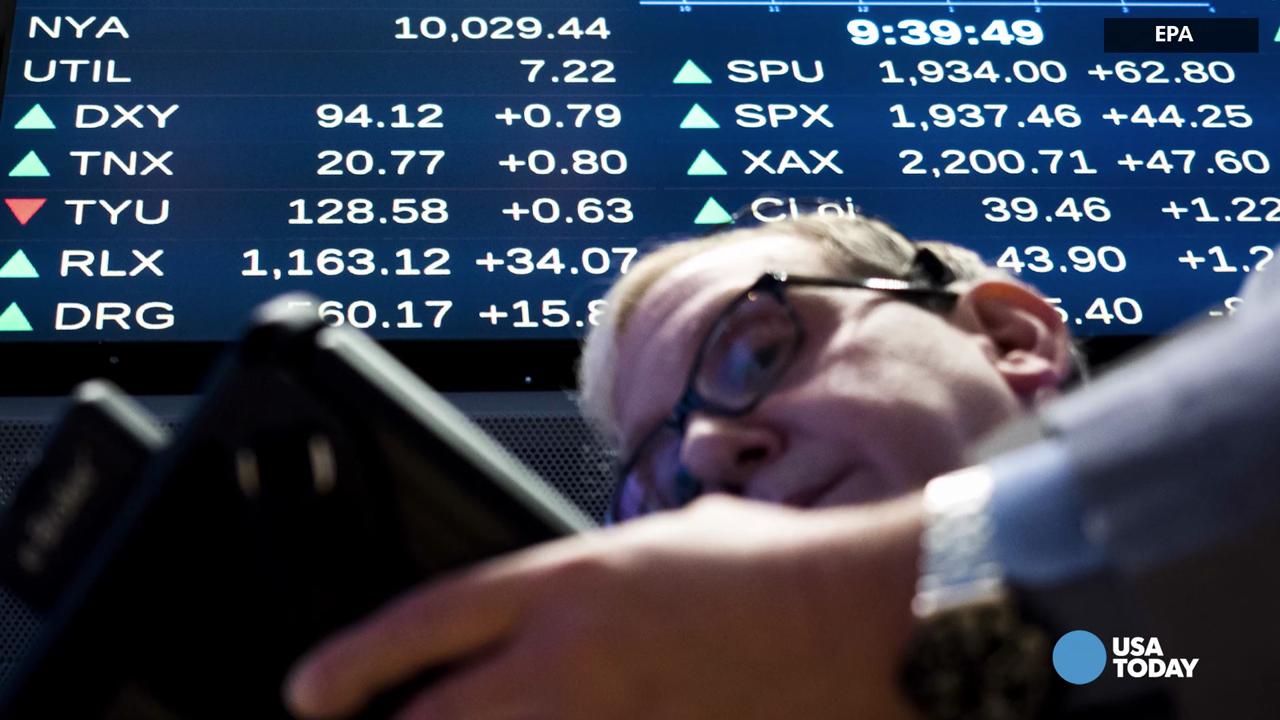China stimulus just first step to market stabilization

Wall Street is desperately in search of shock absorbers to help the stock market stabilize, and China's move earlier Tuesday to cut interest rates and free up more cash for banks to lend is a first step. But Wall Street would like to see a more things happen before there's confidence the recent bloodletting has played itself out and isn't the start of a bigger problem for markets.
Stocks attempted a failed recovery attempt Tuesday after China's latest move to inject stimulus into its financial system. That comes after Monday's wild ride, in which the Dow Jones industrial average was down nearly 1,100 points in early trading before finishing down 588 points, and the broader Standard & Poor's 500-stock index dipped more than 10% below its closing peak.
The Dow on Tuesday closed down 205 points, and the S&P 500 skidded 1.4%. The Dow had been up more than 440 points earlier in the day.
Debate on whether the correction "bottom" has begun in earnest.
The general consensus on Wall Street is that the latest financial market crisis was "made in China." Market strategists interviewed by Paste BN cite China's surprise decision two weeks ago to devalue its currency as the trigger for the latest market instability. The devaluation of the Chinese yuan, experts say, was viewed as a major negative, as it smacked of panic on the part of the Chinese government and suggested that the world's second-biggest economy was in more dire straits than previously believed. In an environment where stocks are overvalued, any signs that weakening growth could hurt sales and profit growth of companies around the world is enough to spark selling.
That said, here are some key things Wall Street pros say could help stem the recent panic on Wall Street and stop the sell-off.
1. Help from China. "We need a circuit breaker to halt the downward spiral and that breaker has to come from the source that triggered the global meltdown: China," says Joe Quinlan, chief market strategist at U.S. Trust. "Investors have lost confidence in China. To restore confidence, China needs to wield a bazooka, or step up with massive fiscal and monetary stimulus that puts a floor underneath growth and stabilizes the overall situation."
China's move earlier today to cut rates and lower the reserve requirements for banks could be the bazooka Quinlan was hoping for.
2. Rate hike delay from the Fed. Many on Wall Street fear that an interest rate hike next month from the Fed — its first in almost a decade — would be a bad idea given the recent market turbulence, and just make things worse. Hints from the Fed that it is willing to hold off on rate hikes could further stabilize markets, says Bill Hornbarger, chief investment strategist at Moneta Group.
"As for what will turn it around? That's the question. It might be as simple as the Fed saying we are on hold for awhile based on recent events," says Hornbarger.
3. End to oil sell-off. U.S.-produced crude broke below $40 a barrel Monday and the commodities crash continues to weigh on emerging markets, global growth and destabilize markets. Oil has to stop going down, says Sean Lynch, co-head of global equity trading at Wells Fargo Investment Institute.
"Stabilization in oil prices and commodities could shore up confidence that global growth is not collapsing," says Lynch.
4. Lower valuations. The best thing about a massive market sell-off is that it makes expensive stocks less expensive, creating fresh value for investors in search of bargains. When investors finally sense a time to pounce and buy stocks on sale, the market will get a bounce," says David Lafferty, chief market strategist at Natixis Global Asset Management.
"There is some good news," says Lafferty. "Valuation is improving so some things are finally getting cheap enough to be interesting again."
5. Strong U.S. economic data. Any signs that the U.S. economy is not being hurt by the China slowdown would give investors a boost of confidence and provide a basis to buy stocks.
"If the domestic U.S. numbers — jobs, housing, manufacturing — all continue to hold in," the market could find its footing again, says Ann Miletti, senior portfolio manager at Wells Fargo Asset Management.